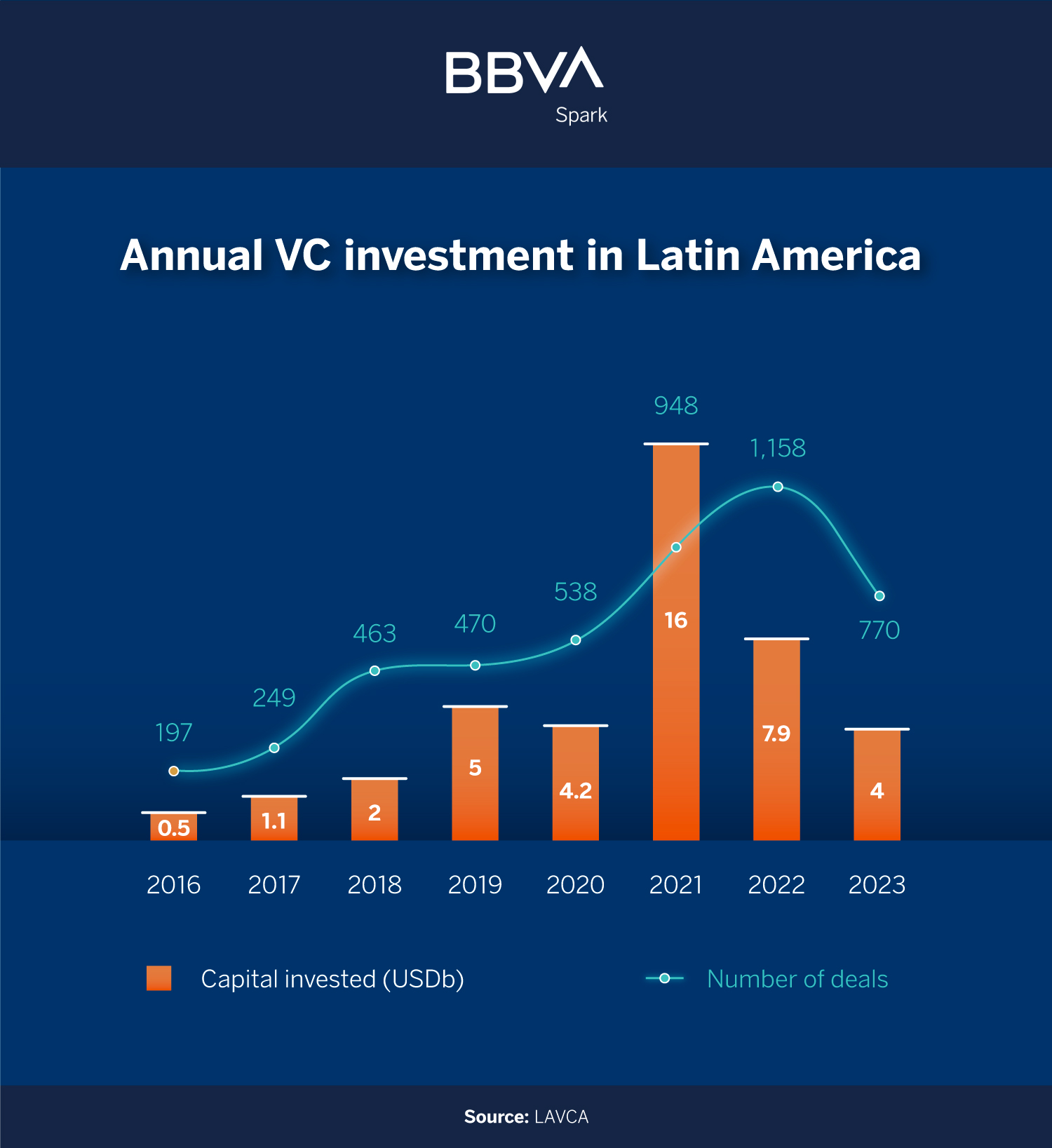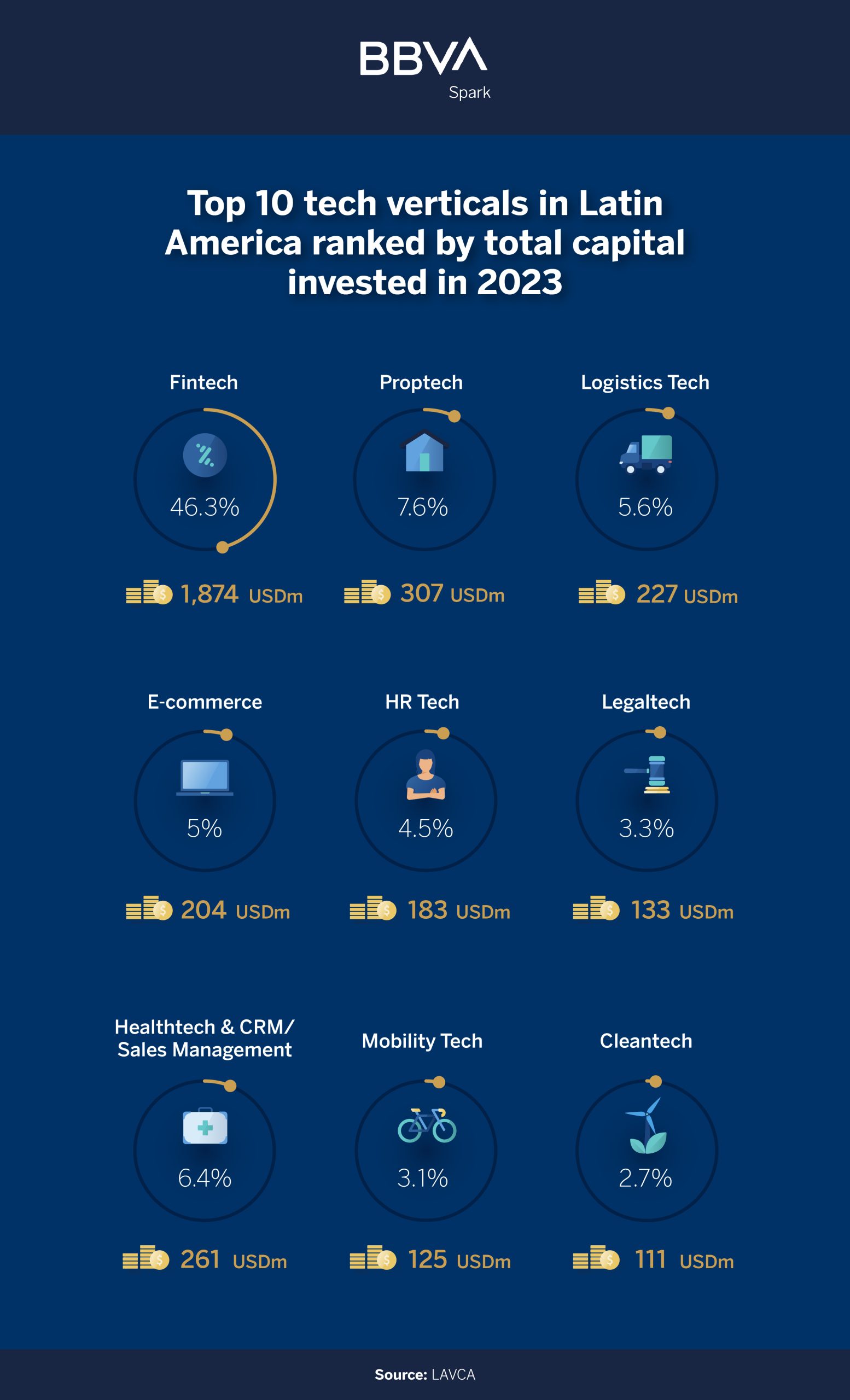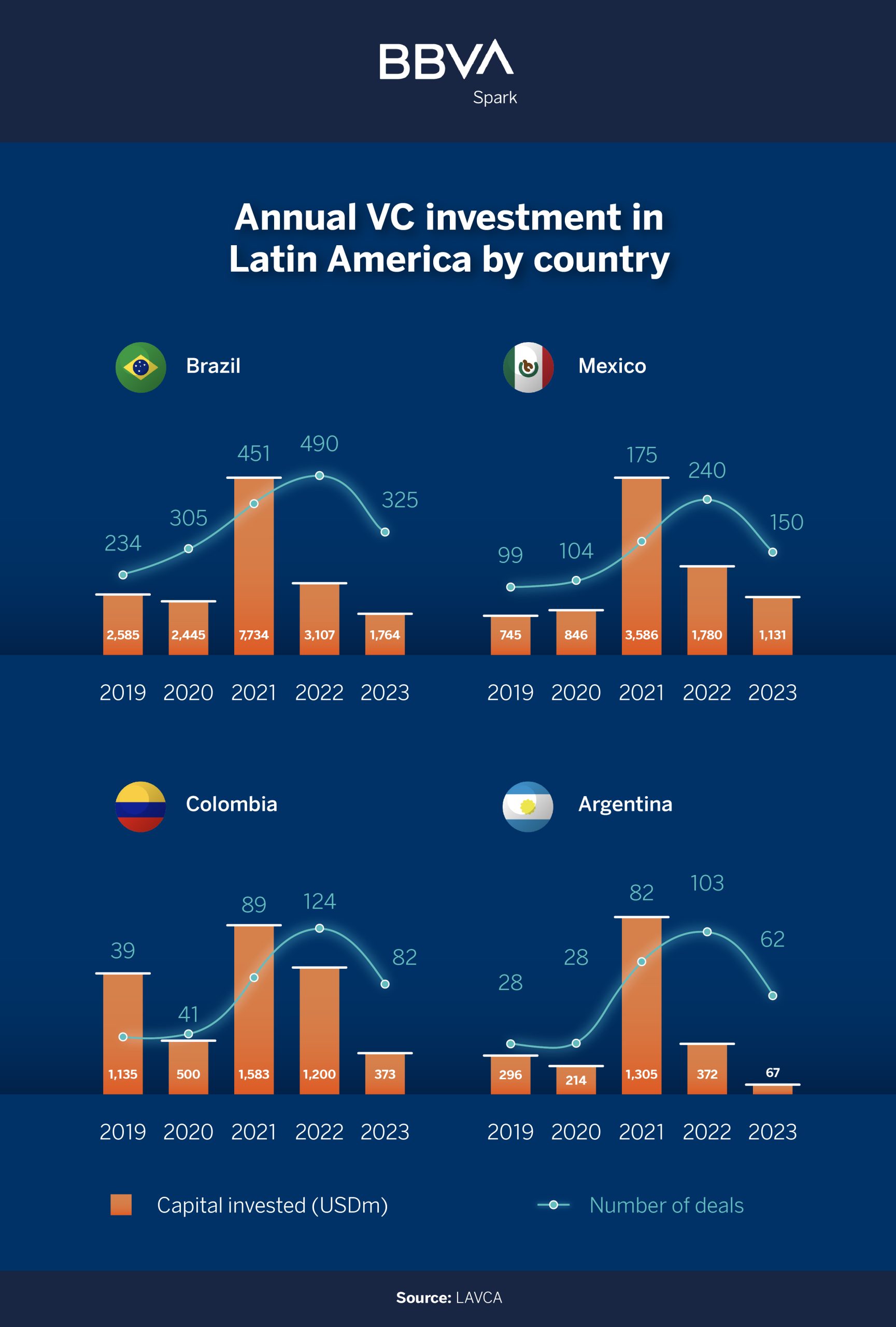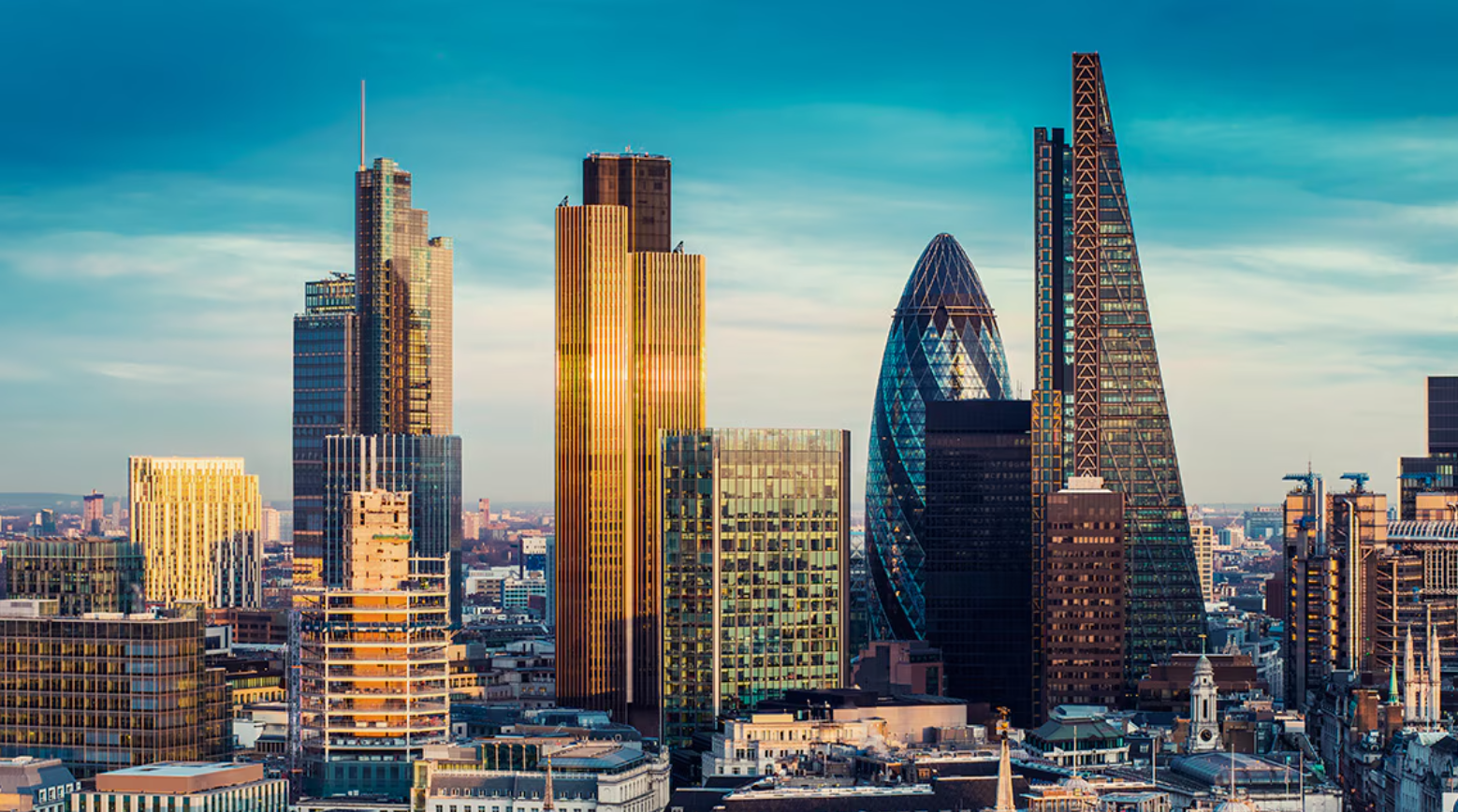Venture capital investment stabilizes in Latin America amidst a global slowdown
Venture capital investment in Latin America reached pre-pandemic levels in 2023, with a total of $4 billion invested. Last year, Brazil maintained its leadership in the region, followed by Mexico, and the fintech sector solidified as the most relevant by investment volume. The reduction of mega-rounds, investors’ focus on seed-stage startups, and the elongation of deal timelines are among the key factors highlighted by LAVCA.
Venture capital investment in Latin America experienced significant growth in recent years, peaking in 2021 at $16 billion. Following years of rapid expansion, came the decline in 2022 ($7.9 billion) and 2023 ($4 billion). The Association for Private Capital Investment in Latin America (LAVCA) describes last year as a “consolidation period,” according to their report 2024 LAVCA: Trends in Tech, which examines the evolution and trends of investment in the region.
“In 2021, we had an extraordinary year,” stated Emanuel Hernández, LAVCA’s Research Director, during an Insight Session organized by BBVA Spark to analyze the report’s findings. Thereafter, global investment conditions began to shift due to significant corrections in technology valuations, rising interest rates, and the withdrawal of some global investors leading growth rounds in the region. “This is reflected in Latin America: in 2022, that investment level dropped, and in 2023, it stabilized.”
Venture debt remained a financing source contributing to market correction: it constituted 22% of the investment made in 2023. However, it concentrates on a small number of startups: 71% of the debt was raised in just 5 financing rounds.

Financing rounds: extended timelines and emphasis on seed investment
LAVCA’s report offers five key insights into investment trends in the region:
- Many startups only raise funds in early stages. Since 2019, over 1,700 companies have obtained VC funding in seed and early-stage in Latin America, but without securing the next round of investment. “By mid-2022, many startups closed in certain markets or changed their strategy,” detailed Hernández. “This has led startups to adopt a more operational approach to continue operating without the need for an additional investment round.”
- Focus on seed capital. Early-stage rounds concentrate the majority of capital: they represented 42% of VC capital invested in 2023. Investment in later stages represented 23% of all capital invested in 2023, in line with the 26% of dollars recorded in 2022 but still below historical benchmarks.
- Decline in mega-rounds. In 2023, only 6 startups closed a mega-round (deals valued over $100 million), a significant decline compared to previous years (19 in 2022 and 35 in 2021).
- Longer timelines for funding closure. For example, the average time to close a Series C funding has increased from 13 months in 2021 to 17 months in 2022 and 24 months in 2023. “Now that conditions are different and rounds are taking longer to close, there is a greater focus on profitability and reaching breakeven, because it is not certain that the next round can be raised,” explained Hernández.
- Investors focused on their current portfolio. Investors participating in early-stage rounds in the region have focused on supporting already funded companies rather than providing capital to new startups. Follow-on investments represented 47% of the funds allocated to these stages in 2023, an increase from the 36% average recorded between 2019 and 2022. This trend poses a challenge for emerging entrepreneurs in their search for new capital.

The undisputed leadership of fintechs in Latin America
Fintechs continue to lead VC investment in the region (attracting 46% of the total volume in 2023, more than the combined next nine verticals). “We are observing an increase in the trend of embedded finance, which are services like e-commerce platforms, marketplaces, or insurers, that can incorporate fintech technology not as an independent company but as part of a customer acquisition strategy,” stated Carlos Ramos de la Vega, LAVCA’s Venture Capital Director, in the report presentation session.
“Fintechs have always dominated and in the last five years have been the number one category in terms of investment,” added Hernández. Among the other sectors, the proptech sector stands out, receiving 7.6% of total investment, and in third place, logistics, which represented 5.6% of total investment. “We have observed the emergence of numerous logistics startups that have taken advantage of nearshoring phenomena and the movement of supply chains in Latin America, as well as the growth of international trade,” explained the LAVCA spokesperson.
An emerging vertical is cleantech, ranking tenth in terms of total investment volume. Growing investor interest in startups dedicated to clean energy solutions, environmental monitoring, and sustainable mining has led founders to raise $111 million in 21 rounds during 2023, a 2.7-fold increase from 2021. Artificial intelligence (AI) is another emerging trend, with a record number of 55 funding rounds closed by startups in that vertical in 2023.

Brazil maintained its leadership in the region
In 2023, Brazil continued to consolidate its position as a leader in the Latin American startup landscape. In the last five years, companies based in the Brazilian country have raised $17.6 billion in venture capital investment, approximately 47% in the region. Besides Brazil, four other countries also stood out in the field of startup investment in 2023, with the following amounts:
- Mexico: 1,131 million USD
- Colombia: 373 million USD
- Chile: 238 million USD
- Argentina: 67 million USD

Challenges and opportunities in the region
The year 2023 also stood out as the third year with the highest fundraising for investment in the region, following 2022 and 2021. “Despite this, if you talk to any professional manager, they will tell you that raising a fund at this time is not easy.” This is because most of the registered funds that raised capital in 2023 were established funds: in fact, 70% of the funds raised in 2023 came solely from two: Bicycle Capital and Kaszek.
This dynamic contrasts with what was observed in 2021 and 2022, where many managers debuted in the market with their first fund, explained Hernández. “Despite this evolution, the funds raised in the last three years remain significant, and when analyzing the entire growth cycle of these funds, we understand that there is still capital available to invest,” concluded LAVCA’s Research Director.
Financial uncertainty and the rise in interest rates caused an adjustment in venture capital investment in 2023. But as LAVCA’s report suggests, investment in Latin America is entering a stabilization period, with positive signs such as the flourishing of verticals like cleantech or AI marking a promising future.



